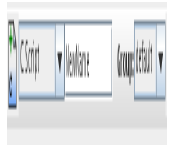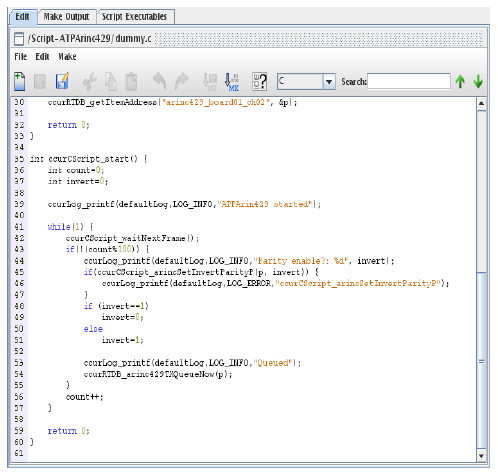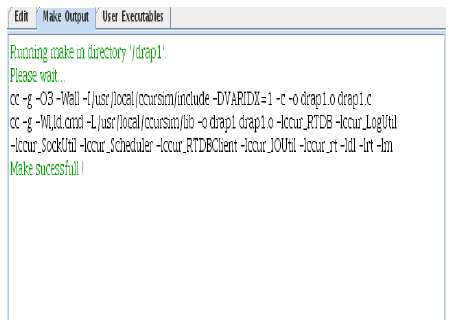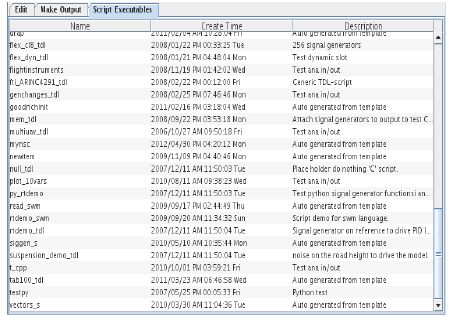
Provides a miniature IDE for building script programs on the real-time host for running during the second stage of the simulation test cycle. See Test Script.

There are no Apply and Cancel buttons. Actions taken in this form take place on the real-time host immediately. It is essentially a remote-control for the compiler on the real-time host.
Expand All 
Expands the hierarchy tree showing script files on the real time host.
Collapse All 
Collapses the hierarchy tree showing script files on the real time host to only show the immediate children of the Script Files node.
Demonstrate 
Opens a short video clip that demonstrates the basic workflow of this form.
Help 
Opens this section of the manual.
Script Files Tree
Shows the script source files present on the real time host. Double clicking on a file will open it in the editor.
Create
Creates a folder on the real-time host under the selected folder in the Script Files tree. Select the type of folder to create from the drop down menu, enter a name for the folder in the text box, select what group it is to be a member of (see Group Table), then press the Create button. The types of folders are:
C Script
Folder initialized with a template for writing a script in the C language.
SWs Script:
Folder initialized with a template for writing a script in the SWs scripting language.
Python Script
Folder initialized with a template for writing a script in the Python scripting language.
Folder
Empty folder. Top level folders belong to a group.
Group
Selects the resource group the new script or top-level directory will belong to.
See Writing Scripts.
Group
Changes the group the selected script belongs to. See Group Table. This combo box is the one located directly above the Edit and Make buttons, not to be confused with the Group combo box above the Create button.
Edit
Opens the file selected in the Script Files tree in the Editor tab. The editor will download the file from the real-time host to allow the user to edit it, then upload it back to the host when it is saved.
Make
Runs the make command on the real-time host in the folder selected in the Script Files tree. Selecting a file in a folder suffices to select the folder for this command. Output from the remote make command will be displayed in the Make Output tab.
Delete
Deletes the file or folder selected in the Script Files tree.
File browser for uploading local files to the real-time host. The destination folder is the folder selected in the Script Files tree on the Script Files tab.

Basic text editor with syntax coloring for some languages.

New
Creates a new empty file. Use Save As... to give it a name.
Save
Saves the current file to the real-time host. This button is active only if the file in the editor has a name and has been modified.
Save As...
Saves the current file with a new name on the real-time host. This button is active only if the file in the editor has been modified.
Cut
Cuts the selected text from the file and puts it in the paste buffer.
Copy
Copies the selected text from the file into the paste buffer.
Paste
Pastes previously cut or copied text from the paste buffer to the current insertion point.
Undo
Undoes the previous change.
Redo
Redoes an undone change.
Save & Make
Saves the current file and runs the make command in the directory selected in the Script Files tree on the real-time host.
Make
Runs the make command in the directory selected in the Script Files tree on the real-time host.
Completion
Selects the word located at cursor and opens the online documentation to a navigator that presents the global names in the API that are possible completions of the word. The appropriate manual will be opened to the documentation for the first function in the completion list.

Function names are listed with parentheses after the name; global variables, enumerations, typedefs, etc. are not. After each function is the name of the manual the function is documented in. Deprecated functions are displayed in gray.
Clicking on a function name once will open the manual to that function. Double clicking will insert the function into the source file being edited and clear the list.
Any time the Name Completion tab is open, it will be populated as the user types.
The above tool bar buttons are also accessible through the menu bar or by right clicking in the editor pane to bring up a context manu.
Current Language
Selects the language for syntax coloring. This is the unlabeled drop down menu in the lower left corner of the editor. The choice of language is normally automatic based on the filename extension. This control may be used to override the default, or to specify the language for a new file that hasn’t been given a filename yet.
Search
Searches for the previous or next occurrence of the text in the search box when the up or down arrows, respectively, are clicked on.
Displays output from the make command running on the real-time host.

Displays a list of all the script programs built on the real-time host.
